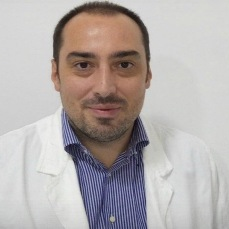One Health Approach to Diagnose and Treat Fungal/Bacterial Infections
A special issue of Diagnostics (ISSN 2075-4418). This special issue belongs to the section "Diagnostic Microbiology and Infectious Disease".
Deadline for manuscript submissions: 31 July 2024 | Viewed by 3554
Special Issue Editors
Interests: fungal infections; aspergillosis; mucormycosis; phaeohyphomycosis
Interests: infection; MDR pathogens; bacteria; fungal infection; aepsis; antimicrobials
Special Issues, Collections and Topics in MDPI journals
Interests: antimicrobial resistance; diagnostic microbiology; immunology and antimicrobial agents
Special Issues, Collections and Topics in MDPI journals
Interests: fungal diagnostics; aspergillosis; antifungal stewardship; post transplant infections
Special Issue Information
Dear Colleagues,
Bacterial and fungal infections are a significant health concern globally, affecting both humans and animals. The concept of "One Health" recognizes the interconnectedness of human, animal, and environmental health and emphasizes collaborative efforts across disciplines to address health challenges comprehensively.
Many bacterial infections can be transmitted between humans and animals, through contaminated food, water, or direct contact with infected animals. Bacterial infections are a major driver of antimicrobial resistance, which poses a significant threat to public health. Antibiotics used in both human medicine and agriculture contribute to the development of resistant bacteria. Some bacterial pathogens can persist in the environment, complicating infection control practices. One Health approaches to combat AMR involve promoting responsible use of antibiotics in both human healthcare and veterinary medicine, as well as implementing infection prevention and control measures, which also involves improving water sanitation and implementing surveillance and control measures in both human-built and natural environments.
The World Health Organization has released its first-ever fungal pathogen priority list (WHO FPPL) to prioritize fungal pathogens systematically. The Centre for Disease Control (CDC, Atlanta) recommends ‘Think Fungus’, as fungal infections are silent killers, ahead of even tropical infections, leading to the death of about 1.7 million patients per year globally. Invasive fungal infections are increasing, and resistance to the most popular group of antifungals—azoles—has started to emerge. Candidemia, invasive aspergillosis, and mucor mycosis have been increasingly reported worldwide, along with the increasing prevalence of fusariosis, phaeohyphomycosis, and trichosporonosis. Drug resistance is being increasingly reported, whether it is Aspergillus strains or Dermatophytic isolates.
Climate change can influence the distribution and prevalence of bacterial and fungal infections by altering environmental conditions such as temperature and precipitation patterns. One Health approaches to addressing climate-related impacts on these infections may involve monitoring changes in disease patterns, implementing adaptive strategies for disease control, and promoting sustainable environmental practices.Potential areas to contribute toward this Special Issue could include:
Newer techniques for identifying bacteria/fungi;
Emerging bacterial/fungal infections;
Bacterial/fungal pathogenesis;
Identifying biomarkers: existing or new;
Antifungal susceptibility testing and antifungal drug resistance;
Newer antimicrobial agents and their spectrum;
New approach to disease mechanisms;
Molecular diagnosis of bacteria/fungi;
Co-infections/superinfections: bacteria, fungi, and other pathogens;
Environmental bacteria/fungi and their impact on human health;
Epidemiological typing in relation to fungal isolates such as Candida auris;
Climate change and the impact on bacterial/fungal infections.
Authors are encouraged to contribute their work related to the latest technologies for bacterial or fungal diagnostics or cutting-edge therapeutic decisions taken.
Dr. Nidhi Singla
Prof. Dr. Alessandro Russo
Dr. Godfred A. Menezes
Dr. Pratibha Kale
Dr. Vinaykumar Hallur
Guest Editors
Manuscript Submission Information
Manuscripts should be submitted online at www.mdpi.com by registering and logging in to this website. Once you are registered, click here to go to the submission form. Manuscripts can be submitted until the deadline. All submissions that pass pre-check are peer-reviewed. Accepted papers will be published continuously in the journal (as soon as accepted) and will be listed together on the special issue website. Research articles, review articles as well as short communications are invited. For planned papers, a title and short abstract (about 100 words) can be sent to the Editorial Office for announcement on this website.
Submitted manuscripts should not have been published previously, nor be under consideration for publication elsewhere (except conference proceedings papers). All manuscripts are thoroughly refereed through a single-blind peer-review process. A guide for authors and other relevant information for submission of manuscripts is available on the Instructions for Authors page. Diagnostics is an international peer-reviewed open access semimonthly journal published by MDPI.
Please visit the Instructions for Authors page before submitting a manuscript. The Article Processing Charge (APC) for publication in this open access journal is 2600 CHF (Swiss Francs). Submitted papers should be well formatted and use good English. Authors may use MDPI's English editing service prior to publication or during author revisions.
Keywords
- bacterial infection
- fungal infections
- pathogenesis of fungi
- molecular diagnosis
- treatment of fungal infections
- MALDI TOF
- fungal biomarkers
- antifungal susceptibility testing
- drug resistance in fungi







